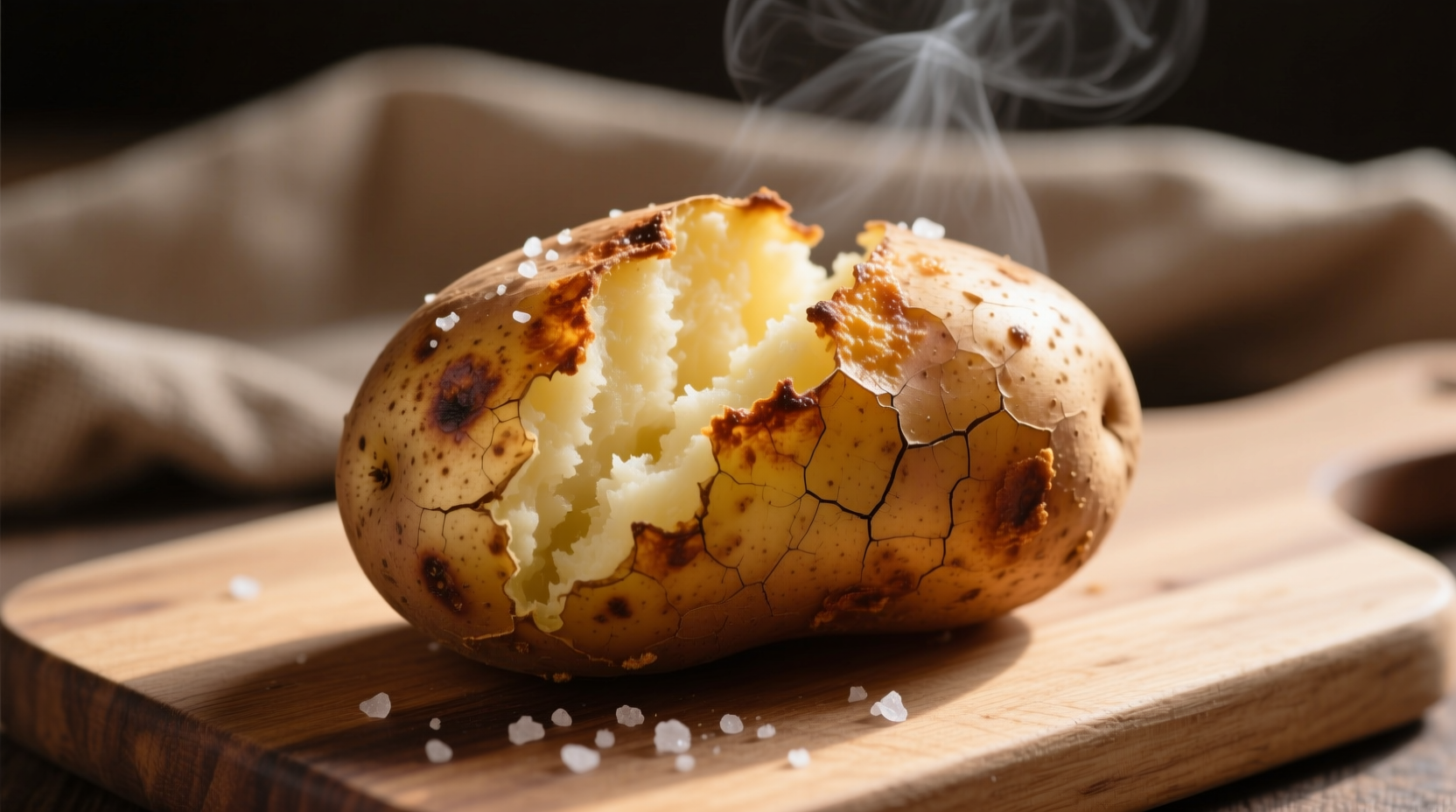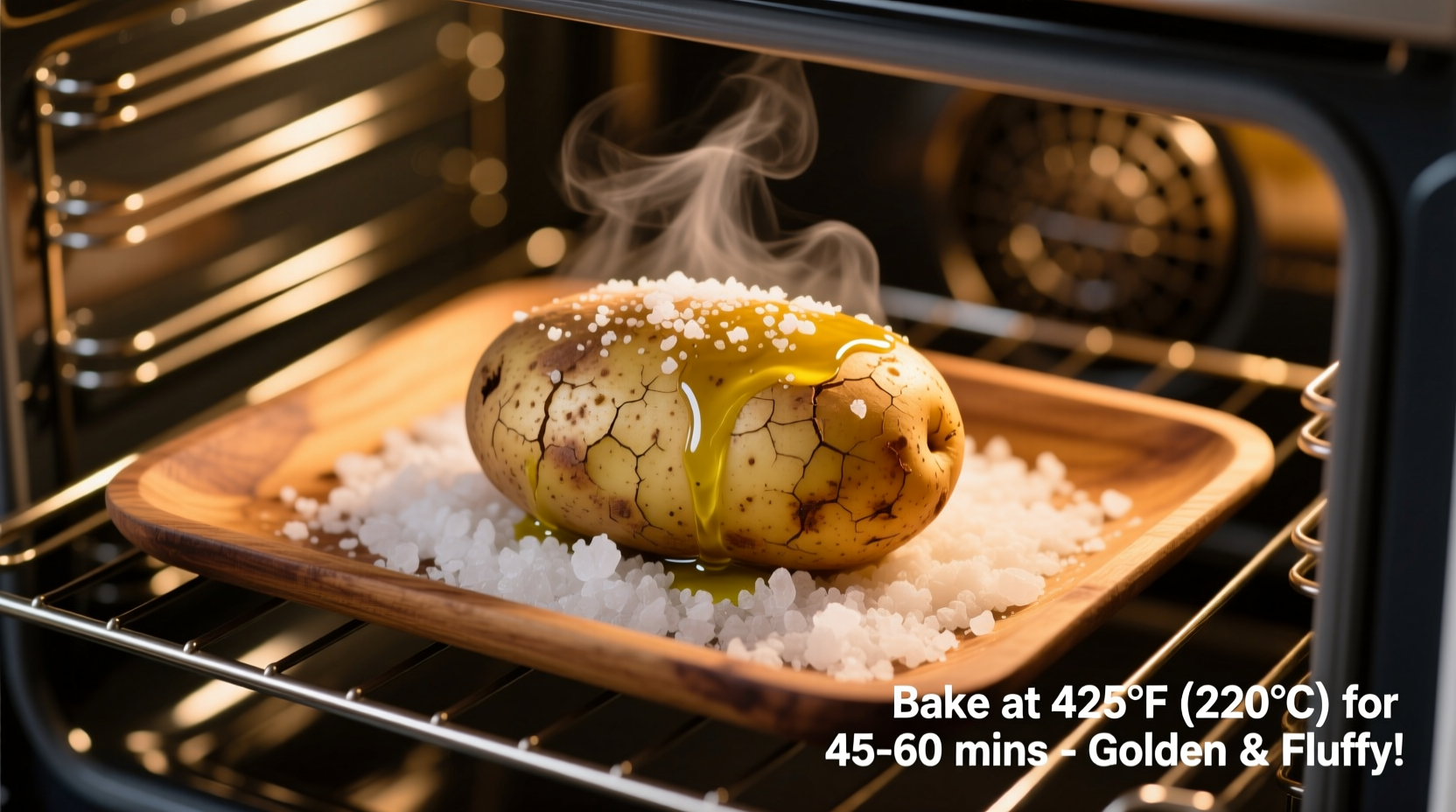The fastest way to bake a perfect oven potato: Preheat to 400°F (204°C), scrub and dry a russet potato, pierce with a fork, and bake directly on the oven rack for 45-60 minutes until fork-tender. For crispy skin, rub with oil and salt before baking.
Master the Art of Oven-Baked Potatoes: Your Foolproof Guide
Nothing beats the comforting simplicity of a perfectly baked potato. Whether you're craving a fluffy interior with crispy skin or need a versatile side dish for dinner, this guide delivers professional results every time. Forget dry, unevenly cooked potatoes—learn the chef-approved techniques that transform this humble staple into a culinary highlight.
Why Oven Baking Beats Other Methods
While microwaves offer speed and air fryers provide crispiness, oven baking creates the ideal balance of fluffy interior and caramelized skin. Unlike boiling (which leaches nutrients) or microwaving (which often yields uneven texture), the dry heat of an oven develops complex flavors through the Maillard reaction while maintaining structural integrity.
| Cooking Method | Texture Result | Time Required | Best For |
|---|---|---|---|
| Oven Baking | Fluffy interior, crispy skin | 45-60 minutes | Classic presentation, maximum flavor |
| Air Fryer | Extra crispy exterior | 35-45 minutes | Quick crispy results |
| Boiling | Uniformly soft | 20-30 minutes | Mashed potatoes |
| Microwave | Soft but often uneven | 5-10 minutes | Emergency situations |
Your Essential Baking Toolkit
- Potato selection: Russets (Idaho) for fluffy texture, Yukon Golds for creamy results
- Oven thermometer: Verifies actual oven temperature (critical for consistent results)
- Fork or skewer: For piercing and testing doneness
- Wire rack: Elevates potatoes for even air circulation (prevents soggy bottoms)
Step-by-Step Perfect Potato Process
Preparation Phase (5 minutes)
- Wash thoroughly: Use a vegetable brush under cold water to remove all dirt
- Dry completely: Pat with paper towels—moisture prevents crisp skin formation
- Pierce strategically: 6-8 deep punctures with a fork (prevents bursting)
- Optional enhancement: Rub with 1 tsp oil and ¼ tsp coarse salt per potato
Baking Phase (45-60 minutes)
- Preheat properly: Set oven to 400°F (204°C) and allow full 20-minute preheat cycle
- Position correctly: Place directly on middle rack or on wire rack over baking sheet
- Monitor progress: Rotate potatoes halfway through cooking for even browning

Doneness Verification (Critical Step!)
Don't rely solely on time—potato size dramatically affects cooking duration. Use these professional indicators:
- Visual cue: Skin appears slightly shrunken with golden-brown spots
- Tactile test: Squeeze gently with oven mitts—should yield slightly
- Temperature check: Insert instant-read thermometer (205-210°F / 96-99°C internally)
- Skewer test: Should slide in with no resistance
Avoid These 3 Common Mistakes
- Skipping the dry step: Moisture creates steam pockets that prevent crisp skin
- Wrapping in foil: Creates a steamed texture rather than baked (except for post-bake holding)
- Under-piercing: Inadequate venting causes explosive bursts during cooking
Pro Chef Variations Worth Trying
- Crispy skin boost: Sprinkle with flaky sea salt immediately after baking
- Flavor infusion: Insert garlic cloves or rosemary sprigs before baking
- Time-saver method: Microwave 5 minutes first, then finish in oven for 20 minutes
Storage and Reheating Guidelines
Properly stored baked potatoes maintain quality for 3-5 days:
- Cooling: Let sit at room temperature for no more than 2 hours before refrigerating
- Storage: Place in airtight container with paper towel to absorb moisture
- Reheating: Wrap in damp paper towel and microwave 2-3 minutes, or 10 minutes at 350°F (177°C) in oven
When Oven Baking Isn't Ideal
While oven baking produces the classic texture, consider these context boundaries:
- Emergency meals: Use microwave method when time is critical (5-7 minutes)
- Large gatherings: Bake multiple potatoes simultaneously but expect 10-15 minute adjustment per additional potato
- High humidity environments: Extend baking time by 5-10 minutes as moisture affects crisping
Expert-Verified Baking Timeline
Based on USDA Food Safety and Inspection Service recommendations, here's the precise baking progression:
- 0-15 minutes: Moisture evaporation phase (skin dries, surface temperature rises)
- 15-30 minutes: Starch gelatinization begins (interior starts softening)
- 30-45 minutes: Critical transformation phase (starches fully gelatinize, internal temp reaches 180°F/82°C)
- 45-60 minutes: Flavor development phase (Maillard reaction creates complex flavors, internal temp reaches 205°F/96°C)
Perfect Pairings for Your Baked Potato
Elevate your potato with these chef-recommended combinations:
- Classic: Butter, sour cream, chives, and black pepper
- Mediterranean: Olive oil, feta, roasted garlic, and lemon zest
- Tex-Mex: Salsa, avocado, cilantro, and cotija cheese











 浙公网安备
33010002000092号
浙公网安备
33010002000092号 浙B2-20120091-4
浙B2-20120091-4